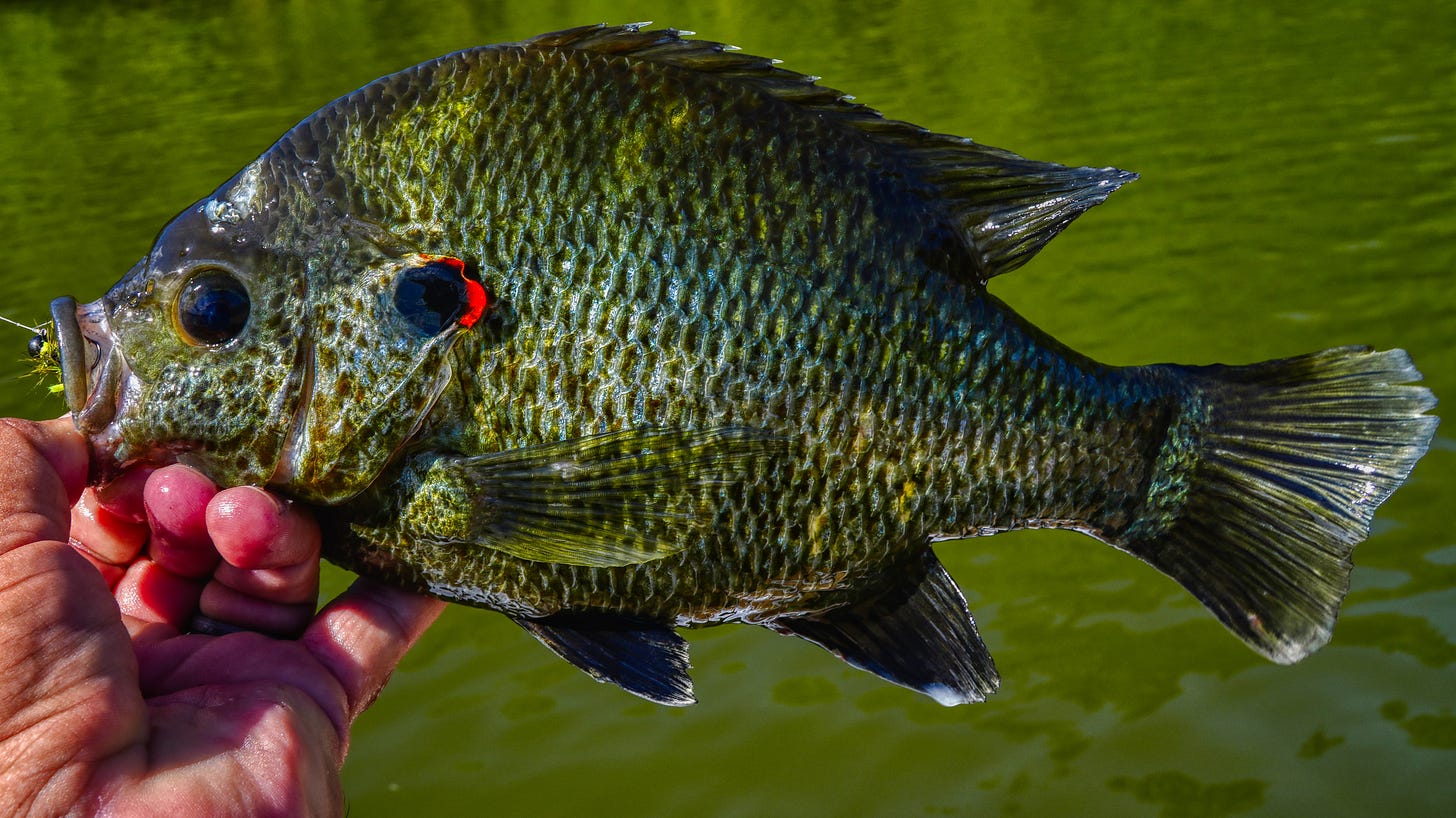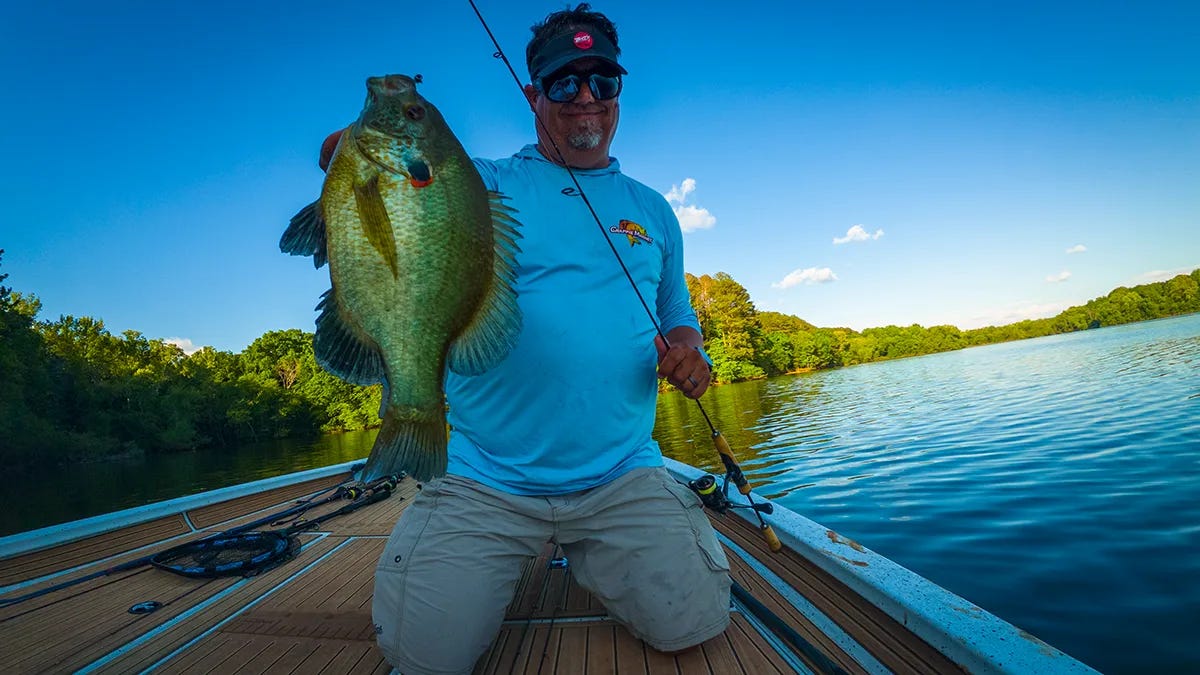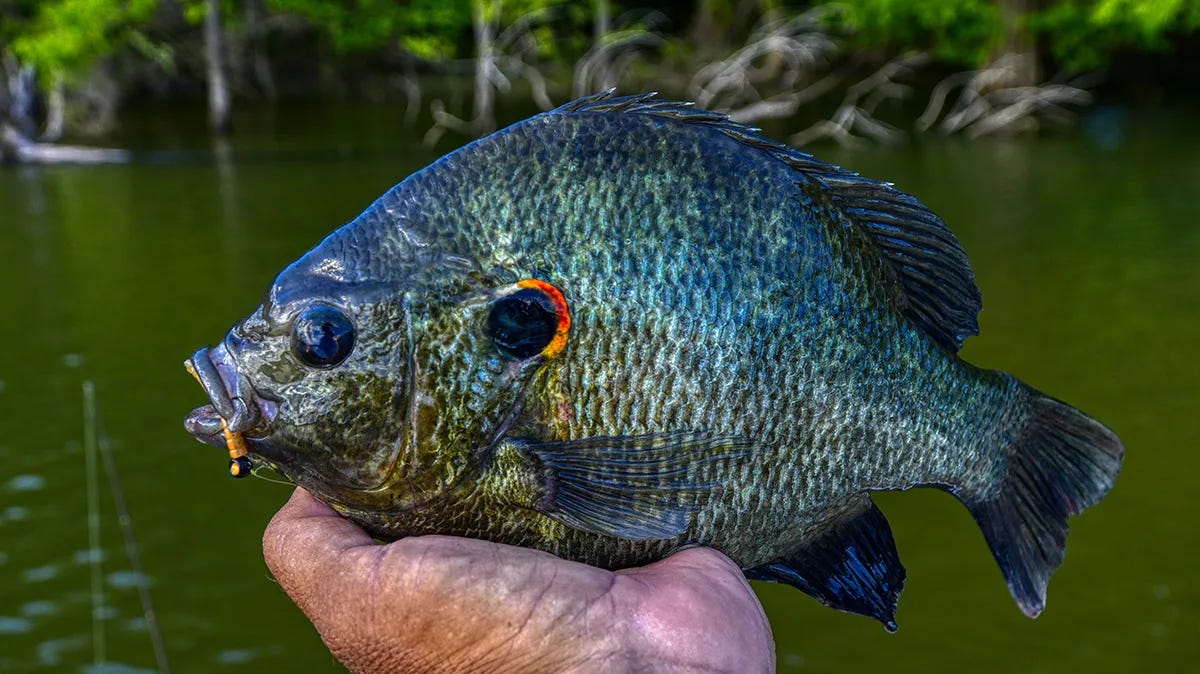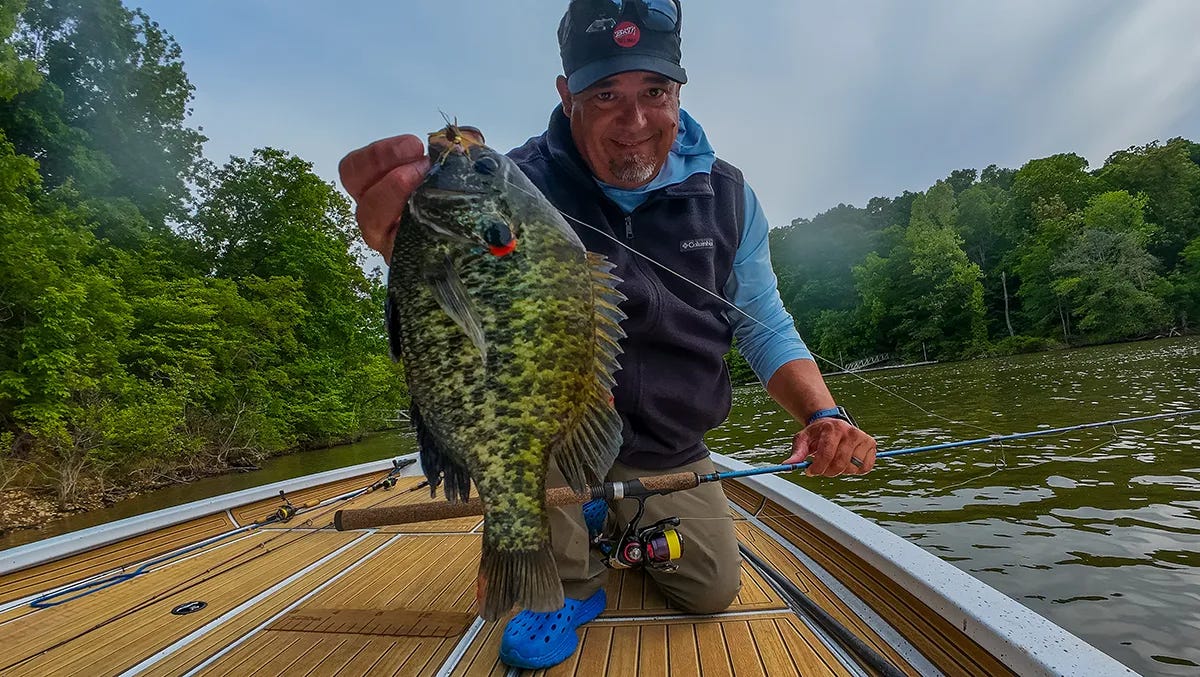The Best Fishing Spots for Red Ear Sunfish
An in-depth look at the preferred areas for shallow red ears around the spring
Red ear sunfish or shellcrackers as many refer to their nickname offer some of the most fun spring time fishing you can find. They grow big and pull hard and are a dang hoot on light gear. And because they are much more uncommon than regular bluegill in most fisheries, they are highly sought after by panfish anglers in the spring. Yet, finding the best fishing spots for red ear in the spring can sometimes be a challenge.
In fact, I will argue I get more messages in my inbox and on my posts around springtime red ear than I do any other fish or time of the year. Folks know I hold red ear in high regard and have shared a lot of good information already about them because the information on fishing for and patterning red ear is severely lacking online or in print.
So I will lay out what has been a two-year study of red ear habits along with two other projects were are privy to around panfish and red ear to hopefully shed a little more light on where red ear prefer to feed and bed in the spring on lakes like Kentucky and Barkley Lakes. I realize some of this information won’t apply to other specific fisheries that have very different ecosystems, but I think generally speaking, the information is relevant to all red ear anglers.
RED EAR PREFERENCES
Everything in a red ear’s life is predicated on three things:
Food
Reproduction
Survival
And knowing that is the beginning of patterning them. Keep in mind, most of us that pursue them believe there is more we don’t know about red ear than do. And I will say a lot of my understanding has come from sharing knowledge with other good red ear anglers and asking for their knowledge in return. As well as working with biologists around the country who have studied and are well read on the published works around red ear.
I’ve actually be pouring through published papers on bluegill and red ears and using AI to help me query a lot of the studies around both panfish to correlate my own learnings and discoveries around red ear. What’s interesting is not a lot exists on red ear preferences but there are some things I did find through my own fishing, talking with other anglers who catch a lot of red ear and some other studies being done now.
What I find most interesting is the similarities and drastic differences between them and bluegills.
Both panfish will adjust their diets to accommodate their surroundings and protect against predation. Meaning they can adapt their diets to eat completely different food sources offshore to avoid being eating by catfish, bass, birds and other animals that might make them dinner. So you can have different red ear or bluegills on the same lake that don’t act like other red ear or bluegills. Some might live shallow and some might try to stay off shore and deeper due to predatory influences.
But for the most part I have found some interesting things related to their diets. First being that red ear eat a lot more than snails. They will eat mussels, snails, nymphs, midges, chironomids, freshwater shrimp, worms, extraterrestrial insects. and other macroinvertebrates and micro organisms.
Because I know this now both from my own sampling with Dr. Flinn of Murray State University and from other sources, I have been using baits that mimic multiple things. Maybe the best bait I’ve found this year has been the Trout Magnet or Panfish Magnet in a new color called Natural on a 1/64-ounce Eye Hole Jig. It looks like a chironomid, mayfly nymph, larvae, midge, etc. It looks like what they eat both in ribbed appearance and coloring.
I also use the new Trout Magnet Cross in brown or Salmon Fix and also my hand-tied tungsten bead flies that have rubber legs or hackle to mimic appendages and legs, again to represent many different things like mayfly invertebrates. If you don’t know how to tie your own jigs you can find something close in the Panfish Magnet Bream Boss or the EuroTackle Strider Fly.
Then I focus more on location and my presentation and less about choosing which lure.
LOOKING FOR HARD SPOTS
During the spawn, one thing I have learned is red ear want to make beds on hard bottoms. Like the hardest spot in the area. I found this through trial and error and really just put it together this year thanks to my Power Pole Spike. I don’t use hydraulic auto anchors on my boat. Instead I have a single Power Pole Spike that I stake down and tie off to fish a second before moving on.
The one draw back of this setup, is when I am on a really hard rocky bottom, it can be hard or impossible to drive the stake. Turns out that has led me to find a lot more red ear. I use the spike not only as an anchor but also a push pole. When I see a bed coming up. I will stake down and make casts to it. Sometimes when I go to stake down it’s too hard and I push myself back off and then stake down in a softer bottom further away.
In doing this, I have found when I find a red ear bed, I can hardly ever get my Spike to stake down. And now when I approach a good looking bed (I find a lot with my sunglasses), and I go to stake down and can’t because it’s too hard, I know I am going to catch red ear. It’s happened to me dozens of times the last two years and now I know.
YOU ARE FISHING TOO DEEP AND IDLING TOO MUCH
I will also say that most anglers fish too deep. And a lot of anglers ruin good red ear beds by idling over them in shallow water. So a lot of guys don’t find them because they literally are not looking in the right areas, or they are being lazy and trying to find them on side scan and blowing the beds out with their outboard. It’s fine to idle out there in 3-8 feet of water. But when you come up and idle in 1-3 feet of water, you’ve ruined any chance of you or anyone else catching those red ear now.
Get off the outboard, and look. I have been able to physically more than half the beds and places I’ve caught red ears this year. A good pair of sunglasses will do you wonders. I am currently using a new OX2 Low Light lens from Island Optics to find most of my red ear beds.
The fact that I am finding them with good sunglasses and most guys are relying on their electronics should tell you a lot about depth. I’m not saying there aren’t any red ear out there deeper, but I can tell you a lot of the good hard spots are really shallow.
NOT IN THE BACKS, BUT ON THE SIDES
I also think guys always assumed you got to run to the back of every creek and every pocket. Several of my best beds the last two years were on the sides of points. Not the backs of pockets.
Now I have caught a bunch of red ear in the backs of pockets. But those are often ones and twos. Not huge beds. The bigger beds have been down the sides of pockets instead of the backs. I think a lot of the backs of pockets get soft again. So again that hard bottom plays a factor.
As does cover. Red ear sunfish definitely favor cover more than bluegill. Cover can simply be a rock or stick on the bottom. Or it can be a bush or bank grass or a laydown or a rock ridge, or rip rap. I don’t know why, but red ears definitely like cover more than gills do. Gills will make their beds out in the middle of a flat with nothing else around. Red ear seldom do that. If they do then it’s because of that hard spot thing I talked about.
DON’T WAIT WITH BAIT, FISH
I also think I find a lot more red ear because I don’t wait around for a red ear to find my live bait, I hunt him down with a good presentation with a suspended bug like a Panfish Magnet under an E-Z Float. Or I hop a hand-tied nymph up off the bottom to get his attention and catch them on the fall.
This allows me to do two things better. One is cover a lot more water. I would say there are 10 million bluegill in Kentucky Lake and probably 10,000 red ear. So just think about how many less places there will be red ear compared to bluegill. So you need to make a good presentation quickly and keep moving until you find one.
Most of the time, if I see a promising bed around a hard bottom, with some cover like weeds, wood or rock, and I pitch my bug in there and twitch it under a cork or hop it back to the boat, a red ear grabs it in the first few casts if he’s there.
So I’m not hunkering down hoping for a red ear. I find out if one is there pretty quick and if not I move to the next likely looking place.
Now this is obviously gear towards the spawn mostly because this is the one time of year that a ton of anglers try to catch them. I will have some more follow up pieces on their summer tendencies, fall tendencies and even winter tendencies and hopefully by that time I will be able to share some incredible insights from a red ear study going on right now that has shed a lot of light for me on their daily habits.









Jason, thanks so much for your hard work and sharing.